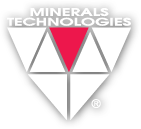Featured Case Studies: Sediment Remediation
BROS SUPERFUND SITE
Logan Township, New Jersey
Historical operations at the BROS Super-fund Site included waste oil storage, processing and disposal. The wastes, which contain heavy metals, PCBs, and other organic compounds, have seeped into the soil and contaminate surface waters and ground water supplying private drinking wells. The Site was placed on the Superfund National Priorities List in 1983. Remediation of the BROS Superfund Site was complex and required management of many interconnected issues.
COLLINS COVE SEDIMENT CAP
Beverly, Massachusetts, U.S.A
The Triton® Marine Mattresses by Tensar® was installed in a former manufactured gas plant (MGP) site to protect the underlying Reactive Core Mat®. This site is now protected against severe erosion caused by weather and waves.

DNAPL STABILIZATION USING ORGANOCLAY
The Atlantic Wood Industries (AWI) site is approximately 48 acres of land on the industrialized waterfront of Portsmouth, Virginia, along the Southern Branch of the Elizabeth River. From 1926 to 1992, a woodtreating facility operated at the site using both creosote and pentachlorophenol (PCP).
DOWNLOAD FULL CASE STUDY
GRAND CALUMET RIVER
East Chicago, Indiana, U.S.A
In 2009, clean up began on a one-mile stretch of the West Branch of the Grand Calumet River. This project involved the mechanical dredging and removal of 82,000 cubic yards of sediments and soils impacted with PAH, PCB, and various heavy metals. The estimated $33 million project was funded under the Great Lakes Legacy Act (GLLA), with the GLLA contributing to 65% of the overall project cost.
HARBOR POINT CAP
Utica, New York, U.S.A
After dredging of a Utica, NY harbor was completed in 2010, investigations revealed residual concentrations of the primary constituents of concern, which included NAPL and PAHs. It was decided that a reactive cap solution should be incorporated into the remedial design to mitigate exposure risks.
ISLAND END SEDIMENT CAP
Boston, Massachusetts, U.S.A
The sediment cap project is situated on a former manufactured gas plant (MGP) site located adjacent to the Boston Harbor. Previous remedial work included dredge and disposal in CAD cell and cap. Persistent sheen resulting from gas ebullition was apparent.
MCCORMICK AND BAXTER SUPERFUND
Portland, Oregon, U.S.A
The former McCormick and Baxter Creosoting Company is located in Portland, Oregon on the Willamette River. This Superfund Site encompasses approximately 41 acres of land and an additional 23 acres of contaminated sediment.
MECO DRIVE
New Castle, Delaware, U.S.A
The U.S. Army Corps of Engineers (USACE) and The Delaware Department of Natural Resources and Environmental Control (DNREC) solicited proposals for the remediation of a storm water ditch that was contaminated with heavy oils containing PCBs and PAHs. The ditch had seeps which were contributing to the contamination in the Little Mill Creek (the outfall for the ditch).
PINE STREET CANAL
Burlington, Vermont, U.S.A.
A manufactured gas plant operated at the Pine Street Canal site from 1895 to 1966. The plant disposed of wastes from the gasification process, including coal tars, which migrated to a canal on the site. In addition, the sites’ history includes activities at a tie-treating facility resulting in DNAPL discharching to the subsurface. As part of many remedial efforts at the site, a sand cap was constructed in 2002 to cover contaminated sediments and restore nearby wetlands.
RAILROAD TIE TREATMENT FACILITY
Escanaba, MI
The groundwater at a former creosote wood treating site was contaminated by non-aqueous phase liquid (NAPL). The contaminated groundwater was a threat to the nearby fresh water bay when NAPL and soluble organics were showing on the surface of the bay.
STRYKER BAY
Duluth, Minnesota, U.S.A
Stryker Bay was heavily polluted from the late 1800s through 1962. The harbor area was ringed with tar and coke plants, heavy industry and slaughterhouses that all discharged industrial waste into the water. The sediment in the bay, slips and part of the river is contaminated with mercury, polyaromatic hydrocarbons, lead and other toxins as well as a NAPL seep on the east side.
WEST DOANE LAKE
Portland, OR
Clean-up action was approved by the DEQ for contaminated sediments in West Doane Lake at the former Rhone Poulenc pesticide manufacturing facility site located in Northwest Portland. The objectives of the remedial plan include protection for people and wildlife, and to reduce or eliminate potential leaching of contamination from sediment into the sediments.
ZIDELL BARGE COMPANY
Portland, Oregon, U.S.A
Cleanup is required for land which was contaminated with a variety of chemicals as a result of ship construction, ship breaking, and barge construction at a site where heavy industrial use dates back to the early 1900’s. In addition to the site’s former industrial uses, several private and municipal storm sewer outfalls discharge directly to the Willamette river.


